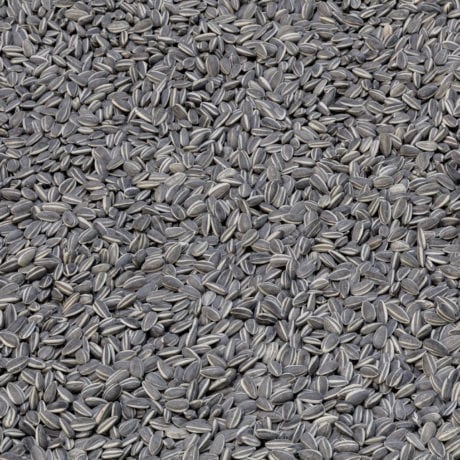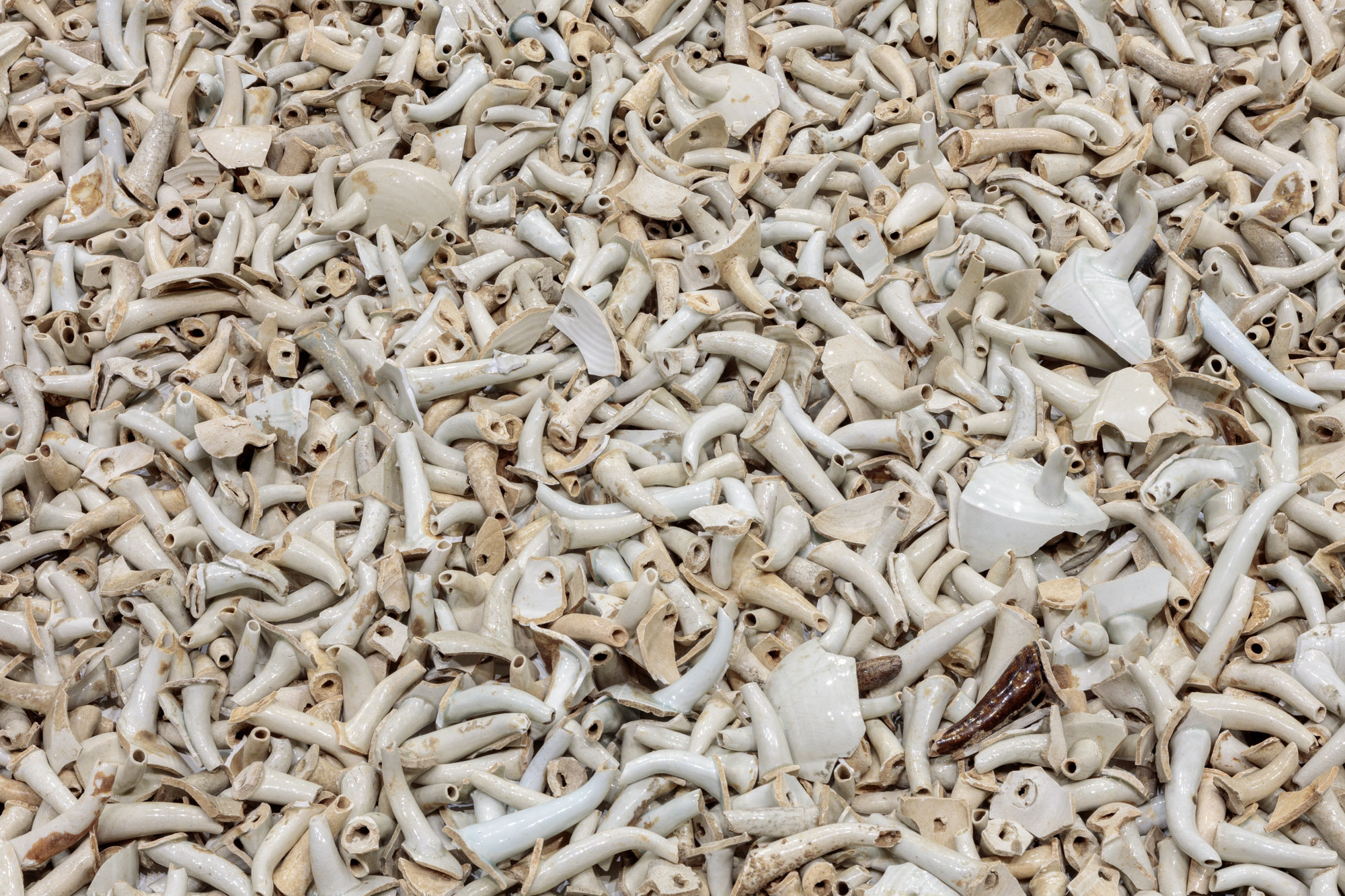
Ai Weiwei’s Life Cycle at the Marciano Art Foundation in Los Angeles begins with the end: Two shallow graves called Sunflower Seeds (2010) and Spouts (2015). Both artworks have been exhibited before in different iterations, cast as very different metaphors then, before Ai Weiwei’s 2015 exile from China after his detention and home confinement. Two monoliths: One, composed of forty-nine tons of porcelain sunflower seeds crafted by artisans; the other, thousands of spouts from destroyed antique Chinese teapots.
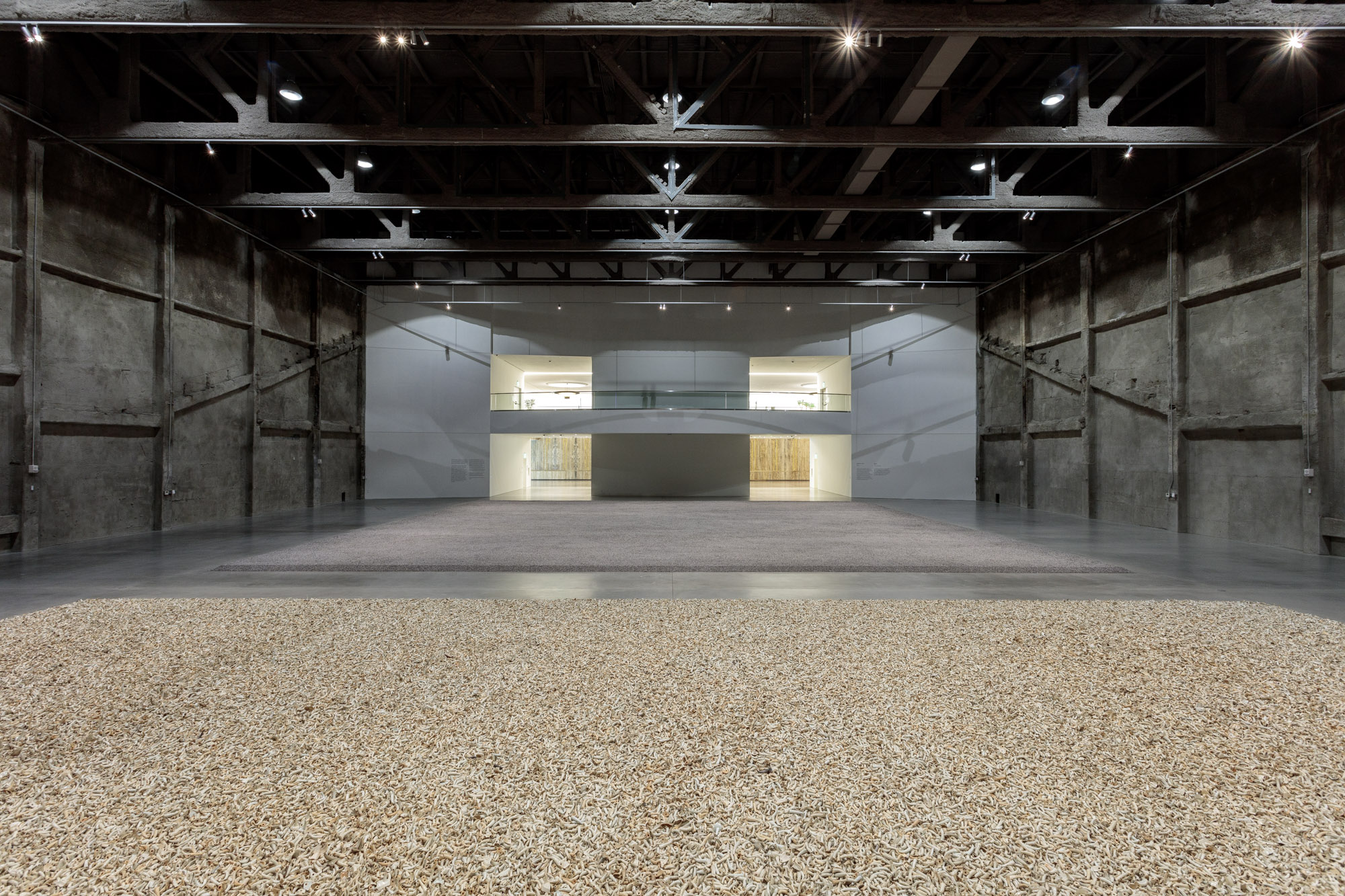
The works are typically understood as commentary on economic exchange and cultural wreckage, specific to Ai Weiwei’s critique of the People’s Republic. But in the Marciano’s catacombic Theater Gallery, the seeds recall a thin layer of soil over an anonymous mass burial. Or perhaps the pebbles of a shore upon which we occasionally find limp bodies. The spouts resemble human entrails, or digits. Rejected lifeforms from the Adriatic Sea.
Beyond these two works, down the steps into the Theater Gallery pit, is Life Cycle, a porous raft made of bamboo. It carries the twisting bodies of folkloric characters, and floats upon a pedestal of literary quotes. Hannah Arendt, Nâzım Hikmet, Franz Kafka and other voices of displacement are bound by a single idea: that the soul keeps our hollow arc adrift, across decades and geographies of crisis. Life Cycle is the last surviving work fabricated in Ai’s Beijing studio, which was demolished by state authorities this year, with no advance warning.
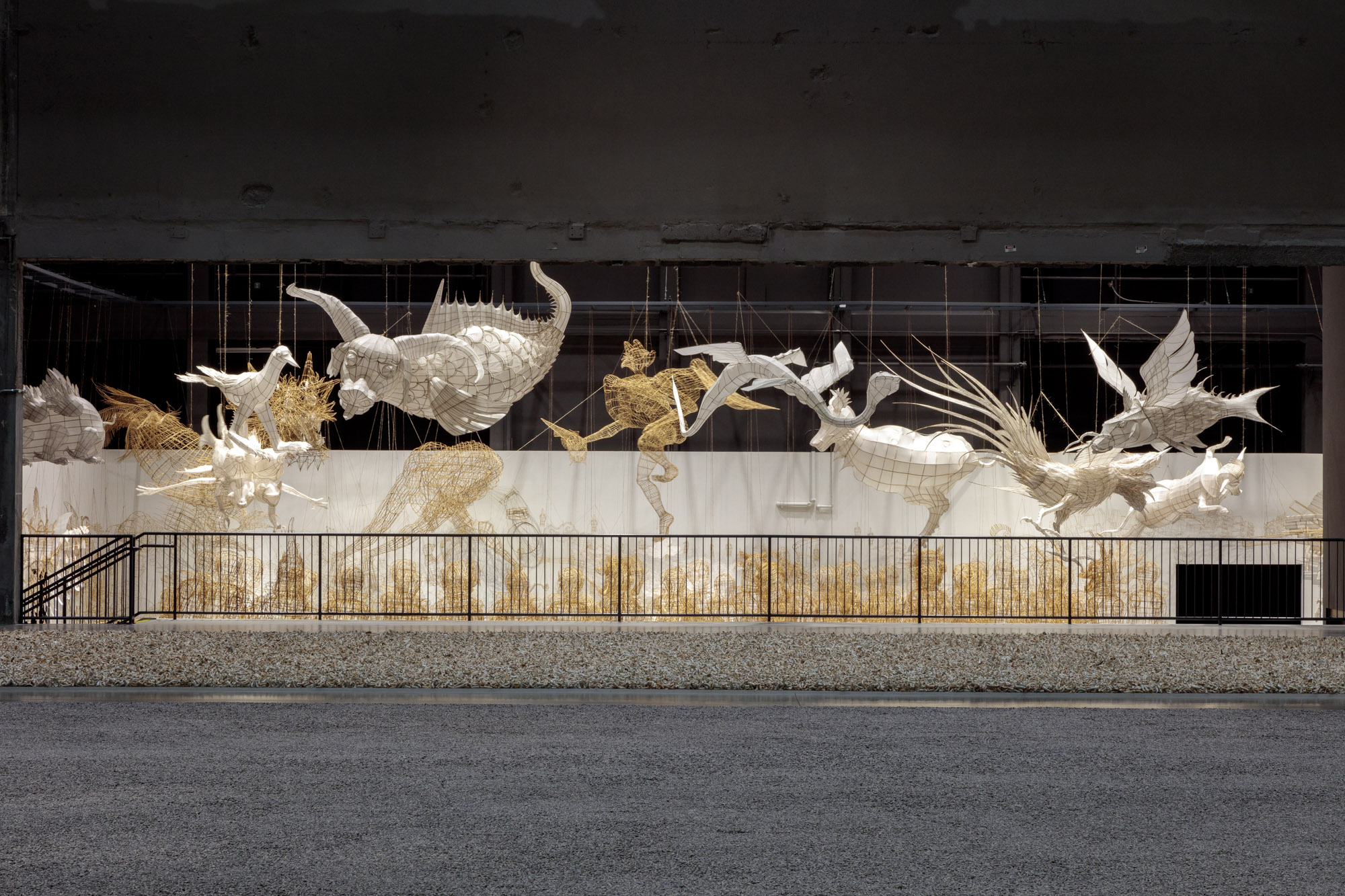
Bamboo and silk figures of ancient Chinese mythology hang above the raft, while other figments of art history and contemporary society surround it, along with their misbehaving shadows. In considering humans in search of refuge, this exhibition joins the artist’s recent works, including Human Flow (2017), a documentary-style film about global migration, and Law of the Journey (2017), with a PVC rubber raft installation carrying faceless huddling human bodies.
But people are conspicuously absent from Life Cycle. There is the detritus of their existence: craft, literature, tradition. The organization and intellectualization of tragedy and its imprints. Crises repeat themselves; move in cycles. Pretty hopeless, I say when meeting the artist during his install at the Marciano. Eventually, he disagrees with me.
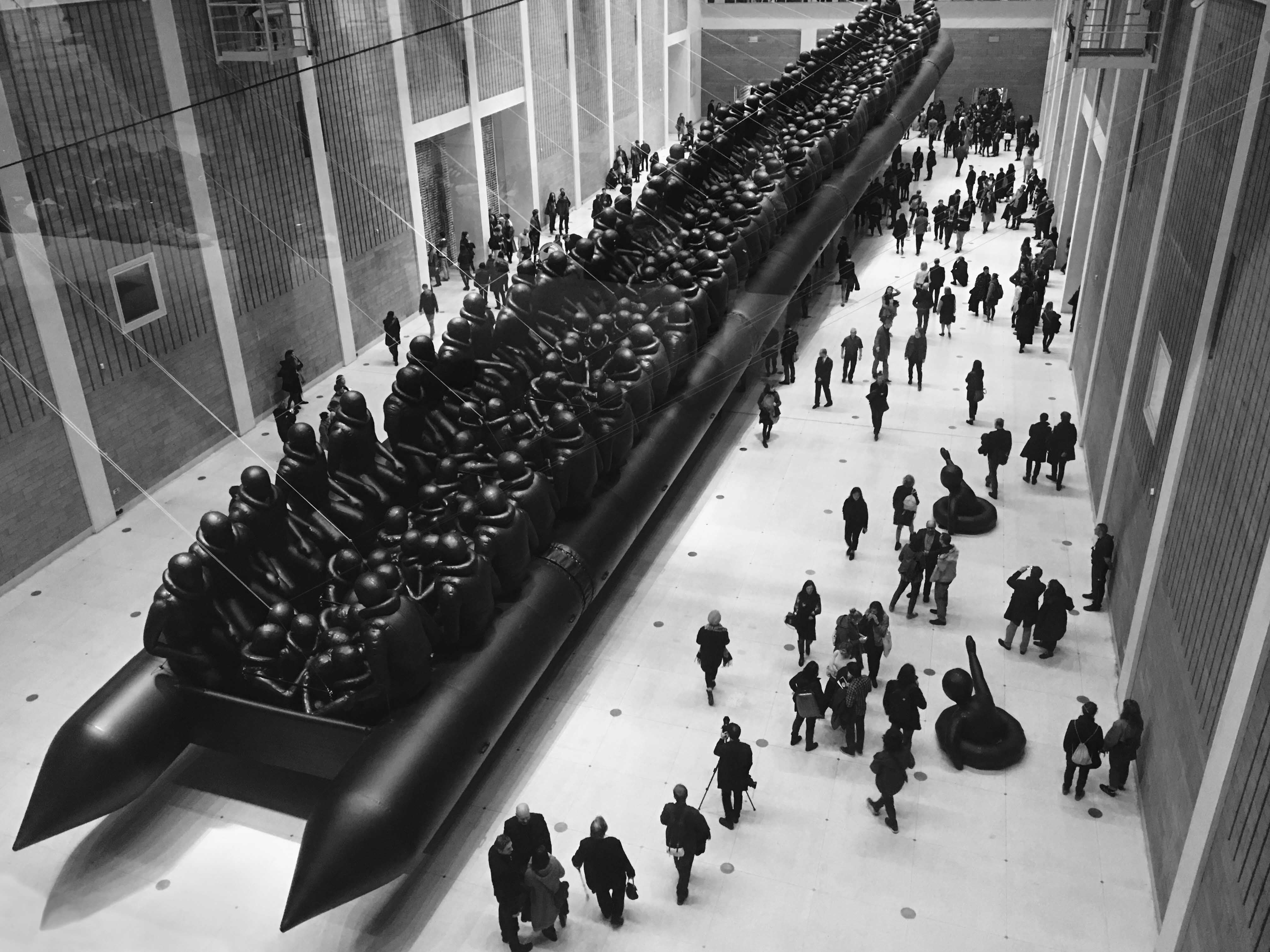
Are your recent works about exile and refuge received differently in different contexts—in China, Vienna, Los Angeles?
In general, people are curious, but the curiosity is superficial: people are curious about the sheer fact that tragedies occur, but not about why. And not about how they relate to all of us, or how we can help. Law of the Journey showed very well in Prague, and that’s a nation that refuses all refugees.
Are you surprised at the similarity of feedback?
As human beings, we are all very practical; as long as our own roof is not leaking we aren’t going to fix anybody else’s. Somebody else’s roof is leaking? That’s too bad. But we live in a fast-changing world. Danger comes at us from every direction—at least that’s a reality for me. Maybe I’m overcautious…
Overcautious in your thoughts or in your work?
If it’s in myself then it has to be in my work. My practice is very thoughtful and careful: You can see it in every knot and curve of the bamboo. You can see me.
“Deep in our hearts we all know we’re going to die one day and that the universe is complete darkness”
Did you struggle with the decision to put yourself on camera in Human Flow?
In the beginning, I didn’t want to be in it at all. I had a lot of footage of myself, though, so after a while, I thought maybe it’s not a bad idea to use it. People follow me and my activities; this was a quick way to connect them to the film. Besides, Human Flow is not a historical journal. It’s a film by one stupid artist who started this project while taking a vacation with his son in Lesbos. To include myself in it is very natural. There’s nothing wrong with it. People have their different opinions, but I don’t really care. We show the truth.
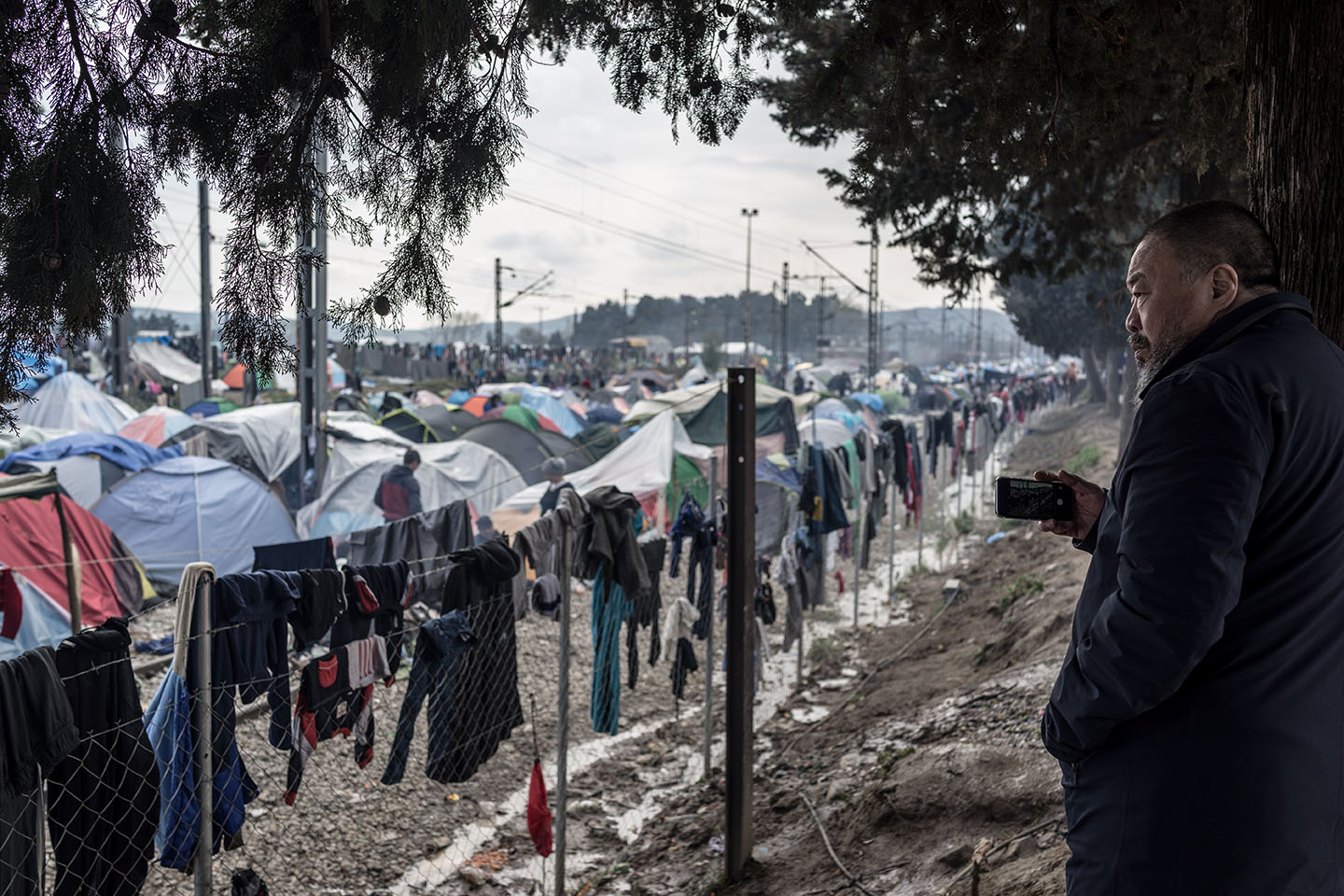
As a well-recognized artist, are you granted different access than a journalist or aid worker? Do people speak differently to you?
I think people speak differently to me because I really do care. I step into difficult and dangerous situations, into forbidden areas, and I demand the truth. Then I allow the story to speak for itself, in a language that isn’t too subjective. It’s hard, but I’m well-trained.
You examine horror in the film, but also the profoundness of boredom—the demoralization of humans with no opportunities or legal rights to do anything but wait.
Deep in our hearts we all know we’re going to die one day and that the universe is complete darkness. We come to all of this only by chance, through some kind of miracle beyond our knowledge, connected to people that we call our families and relatives. But all these things are conditional and fragile. And if you lose your memory, you are totally alone. Every day, we purposefully lose our memory.
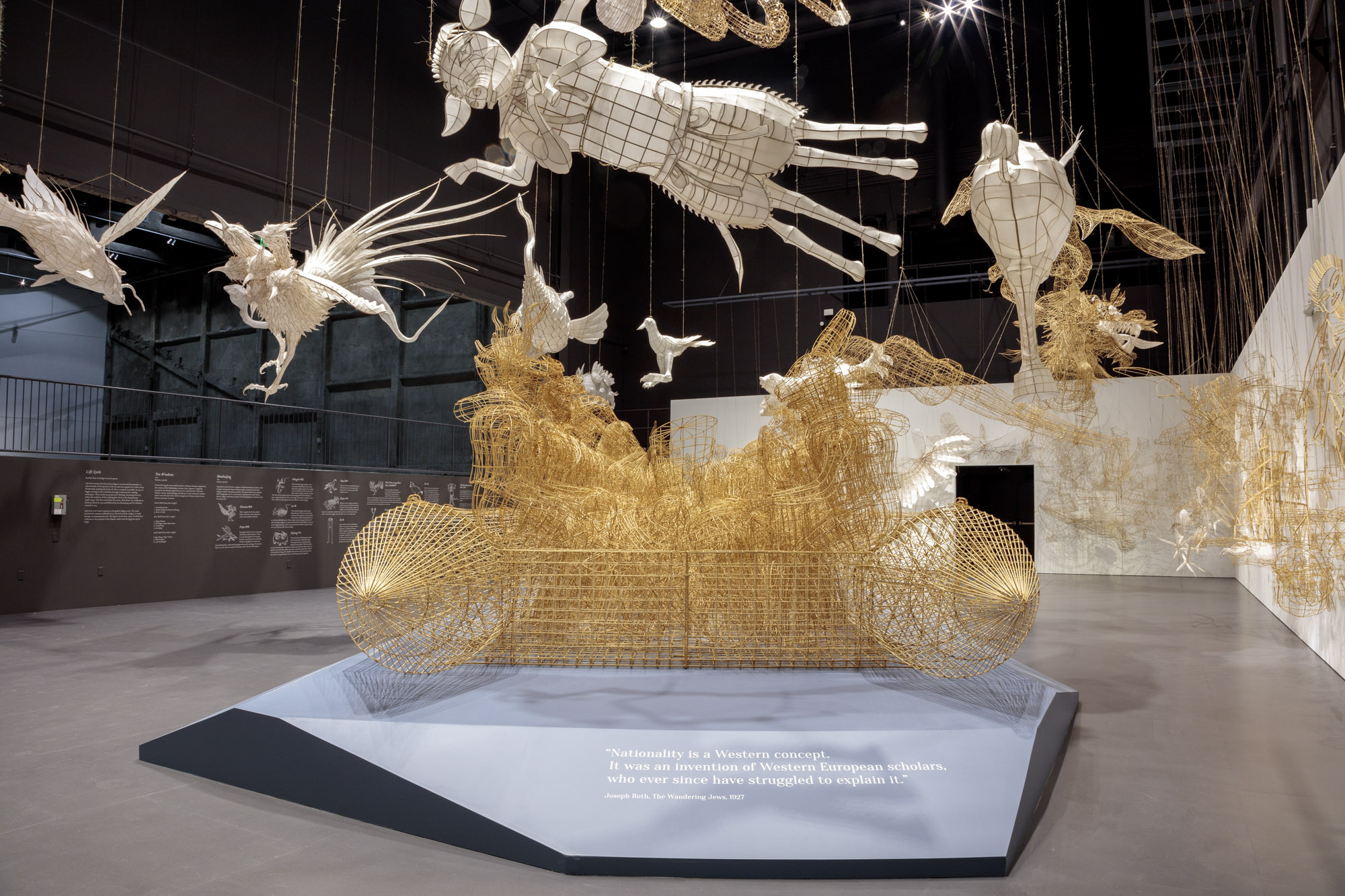
Do you consider the film a safekeeping of memory?
It’s beyond my understanding. Even though I made it, I don’t really know.
How much of Human Flow did you plan before shooting?
We started making a film before we even realized we were making a film. We were recording all the time, but I felt my knowledge of the global crisis was not enough, so we set up a research team. We visited forty camps in twenty-three nations and interviewed over 600 people. This was a journey of learning for me.
One thing we did know from the very beginning: this film is not about one specific tragedy. Tragedies happen throughout history, they have never stopped. Instead, we made a film about humanity. Humanity gives the strongest performance. Humanity has its own voice.
Human Flow and Life Cycle suggest we look to art, literature and mythology to make sense of current tragedies. But since we continue to repeat tragedies, and make more art and literature about it, I walk away with a sense of hopelessness.
No, it’s not hopeless. I think it is hopeful. The point is that human society is made of individuals. If we lose that idea, then we certainly are hopeless. Yes, the universe is basically a cold place. But we create our own rules in it.
“Like a family, the artworks have to take care of each other”
Do you consider all of your works extensions of one other?
Yes, they are like my family, even those I haven’t talked to in a while. Like a family, the artworks have to take care of each other. They come from the same language: the ideas develop and grow stronger.
For example, Law of the Journey and Life Cycle are the same story through different narratives. In Life Cycle, the bodies are unidentifiable, almost transparent. There but not there. In their bamboo outlines, the soul is not there anymore.
When I first saw Life Cycle, I thought it was all soul. That, in comparison to Law of the Journey, it was about the soul transcending the reality of the body.
I can see that, too. It depends on your own feelings and thoughts. Most of my works become clear gradually, like consciousness. In the beginning, I don’t really know that I am attracted to certain ideas. I’m kind of a slow person.
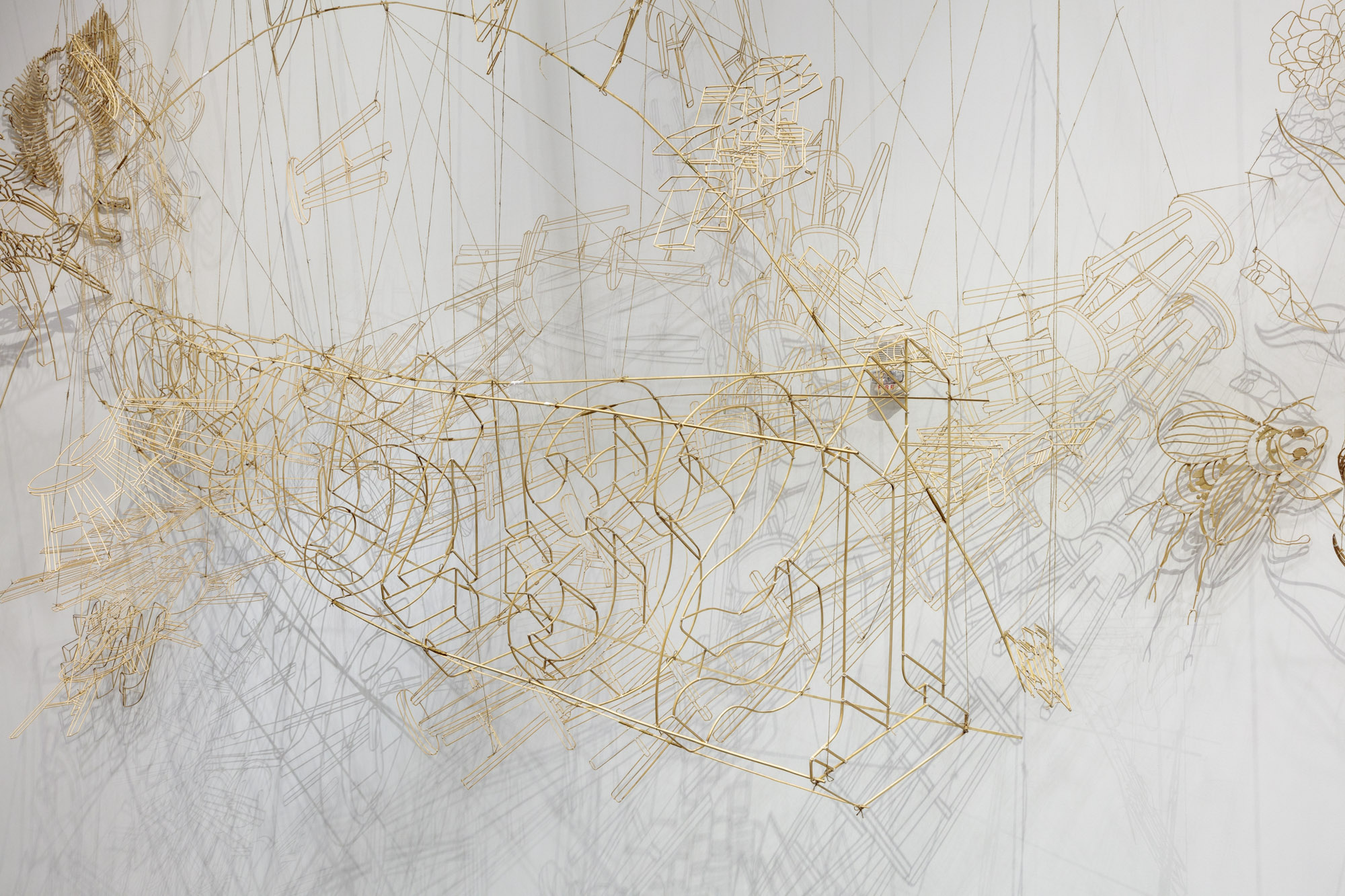
[Laughing] Slow in your process?
I jump into different matters very quickly, but then become deeply involved. So, everything takes a long time to develop.
On the bamboo raft, one face is looking outward, while the rest look in. What is the reason…
I don’t want to describe it in detail.
Okay, what about another detail: The spouts appear to be broken from the antique teapots in a very specific way. There’s a certain craftsmanship to the destruction. Can you describe the process of breaking each teapot?
Do you want to try breaking one? [Laughs.]
I wouldn’t mind. But, really, how do you preserve each spout in this unified way?
The spout is very much like an organ. It has its particular shape and remains strong, even when parts around it break.
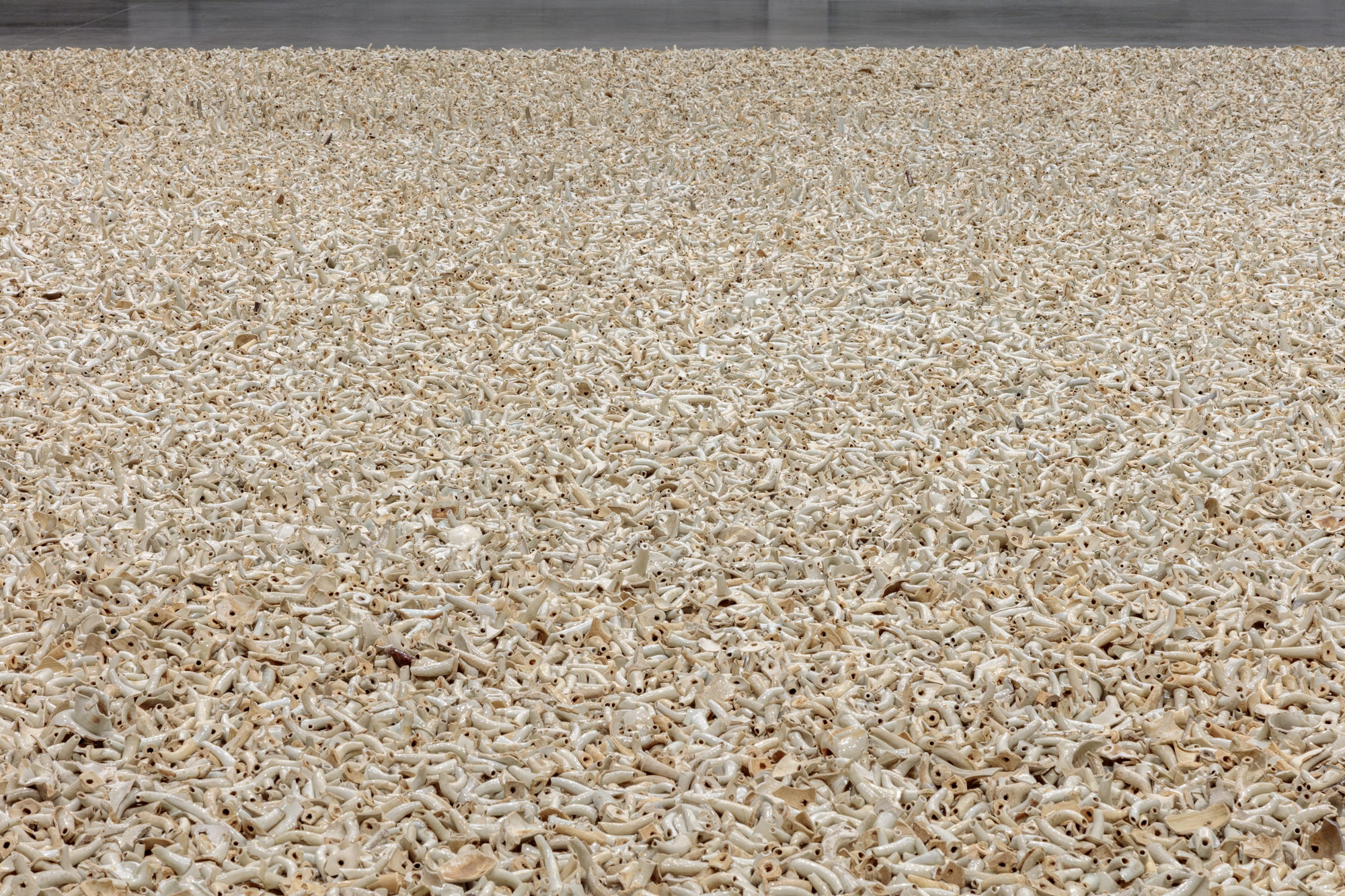
Your Beijing studio was demolished just after you completed and shipped Life Cycle. It’s remarkable the artwork survived.
Yes, it so happens that now my works have become refugees themselves. But the truth is, I make every work as if it is both my first and last. I don’t have a sense of purpose in my life. Yes, I have temporary goals: this shape could be better, this lighting could be better… But after all of these struggles, I feel like everything is complete nonsense. I’m not—I don’t know. Maybe I need to be more religious. But I think, if there is a god watching how humans play, then that god is laughing. Haha. You know?
Still, this exhibition suggests a religious element.
Any artwork, if we consider it relevant, suggests a religious element. If it creates a language, a ceremony, a mood.
I think that everything in the world serves a purpose beyond our understanding. We used to be more accepting of what nature gives us. Today, human beings want to say that we understand everything. That we control the universe—and that is our biggest misunderstanding. After all, we know nothing. We’re just passengers here, yet we have the arrogance to create nuclear bombs, hurt animals and the environment. We are so greedy and so ruthless. We create societies to protect our desires and greediness and we call that democracy. Nobody really believes that a democracy serves its people that way! We have societies that give no space to their own citizens—that sacrifice the whole nation just for the desires of the few. All of these ideas are wrapped together on stage at the Marciano Foundation.
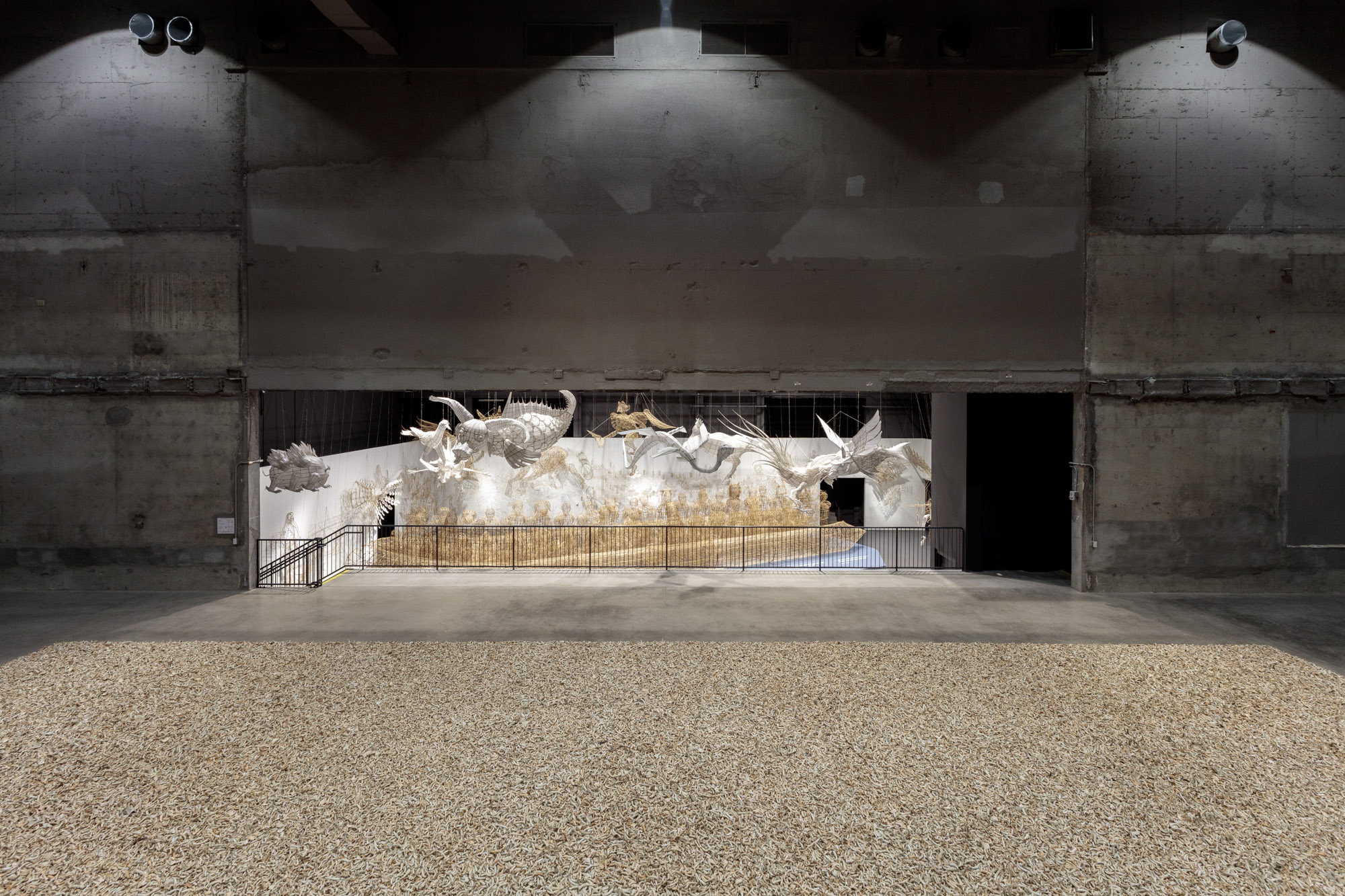
And you wrap your personal experiences into these bigger archetypes and conversations?
Because that’s the way it happens. Whether the viewer gets it or cares—well, I made an effort. We can talk about art history—works related to Duchamp, to Jasper Johns—alongside my social media activities, which are often silly and ridiculous, but real. Some people sacrifice their lives for adopting an attitude of freedom, for initiating tension with people who hate it, who are afraid. Why do they hate me? For what reason? Why do they impart such violence upon one individual? We are all passengers. We cross the same mountains. We cross the same rivers.
